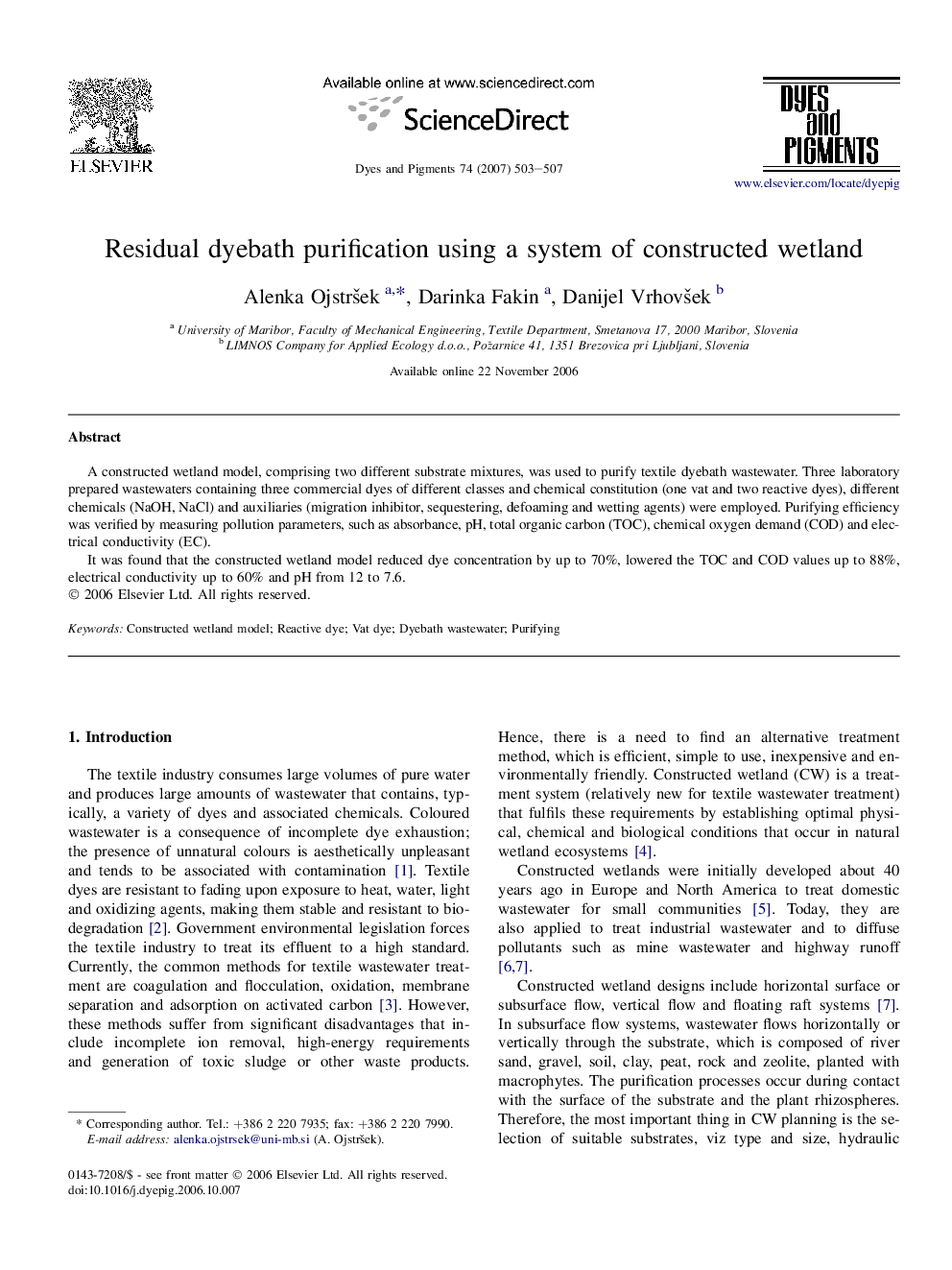| Article ID | Journal | Published Year | Pages | File Type |
|---|---|---|---|---|
| 178007 | Dyes and Pigments | 2007 | 5 Pages |
A constructed wetland model, comprising two different substrate mixtures, was used to purify textile dyebath wastewater. Three laboratory prepared wastewaters containing three commercial dyes of different classes and chemical constitution (one vat and two reactive dyes), different chemicals (NaOH, NaCl) and auxiliaries (migration inhibitor, sequestering, defoaming and wetting agents) were employed. Purifying efficiency was verified by measuring pollution parameters, such as absorbance, pH, total organic carbon (TOC), chemical oxygen demand (COD) and electrical conductivity (EC).It was found that the constructed wetland model reduced dye concentration by up to 70%, lowered the TOC and COD values up to 88%, electrical conductivity up to 60% and pH from 12 to 7.6.
